TOWERING TURBINES
One of the answers to South Africa’s power crisis is blowing in the wind
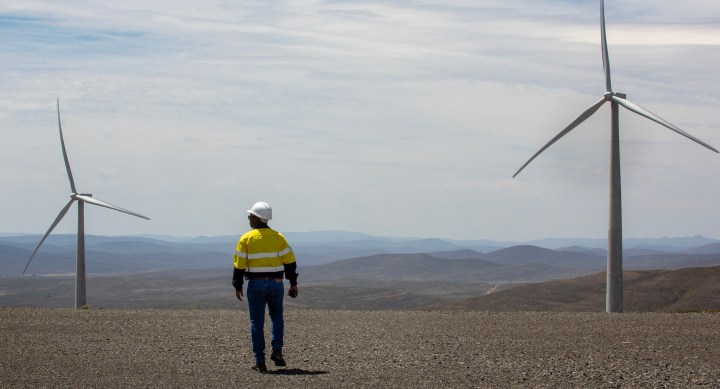
As renewable energy projects ramp up across South Africa, Roggeveld Wind Farm can satisfy the energy needs of about 50,000 households in the Western Cape and Northern Cape.
A vast expanse of towering wind turbines straddles the boundaries between the Western Cape and Northern Cape, near the towns of Laingsburg, Matjiesfontein and Sutherland, where Red Rocket’s Roggeveld Wind Farm is located.
During a recent tour of the wind farm, Daily Maverick was shown how the farm can generate about 613GWh per year for Eskom, satisfying the energy needs of about 50,000 households in the Western Cape and Northern Cape.
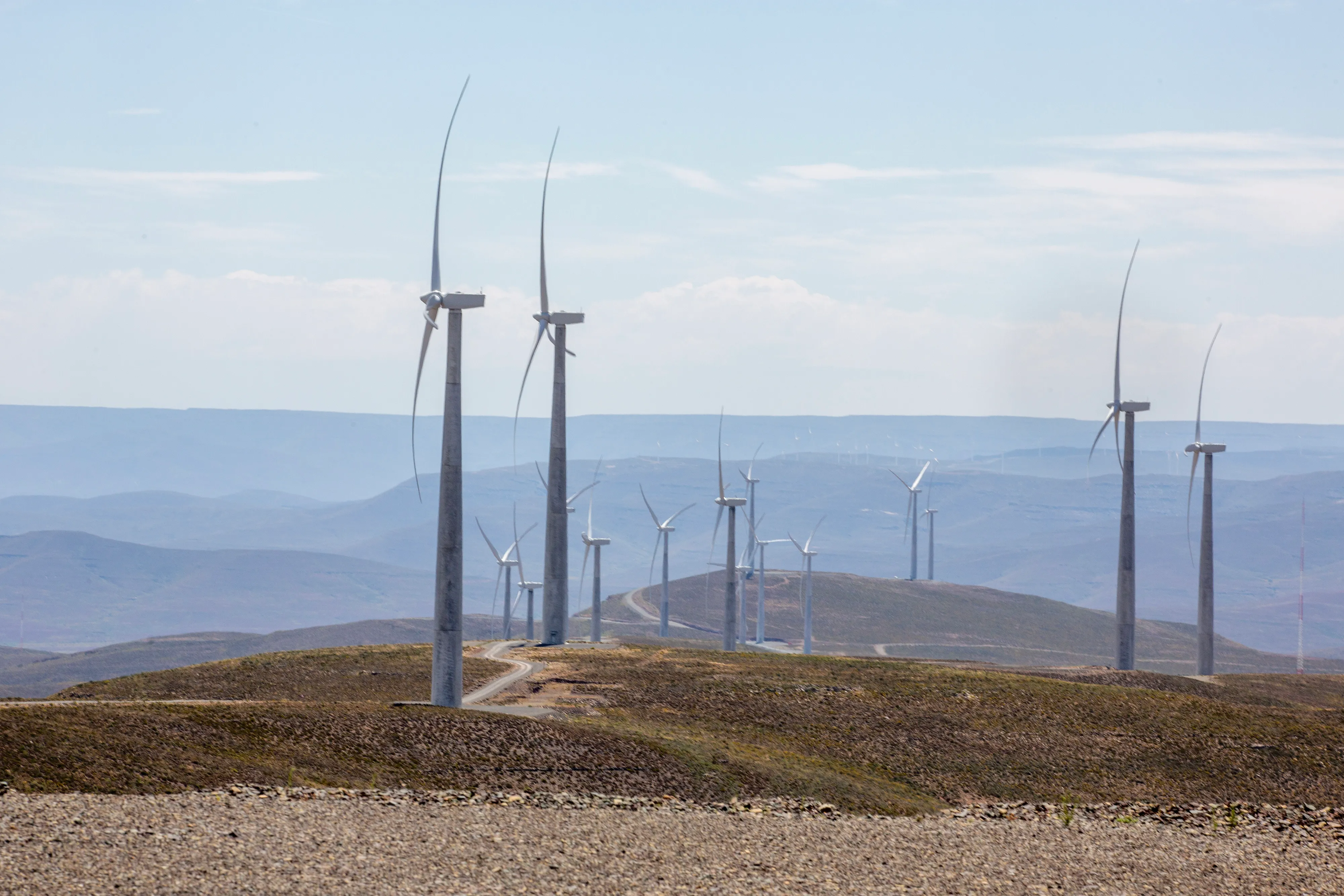
The Roggeveld wind farm on the border of the Western Cape and Northern Cape near Matjiesfontein produces 613 GWh per year for Eskom, satisfying the energy needs of about 50,000 households while avoiding about 502,900 tons of CO2 emissions.
Renewable energy uptake in SA has increased substantially over the past few years through the Renewable Energy Independent Power Producer Programme (REIPPP), with wind generation, as well as other renewable generation sources, assisting in reducing the impact of load shedding and reliance on Eskom’s ageing coal fleet.
In an email to Daily Maverick, Eskom said that on average, wind generation had contributed 1,534MW — with a minimum of 131MW to a maximum of 3,050MW — during evening peak times over the past 12 months, equivalent to one to two stages of load shedding.
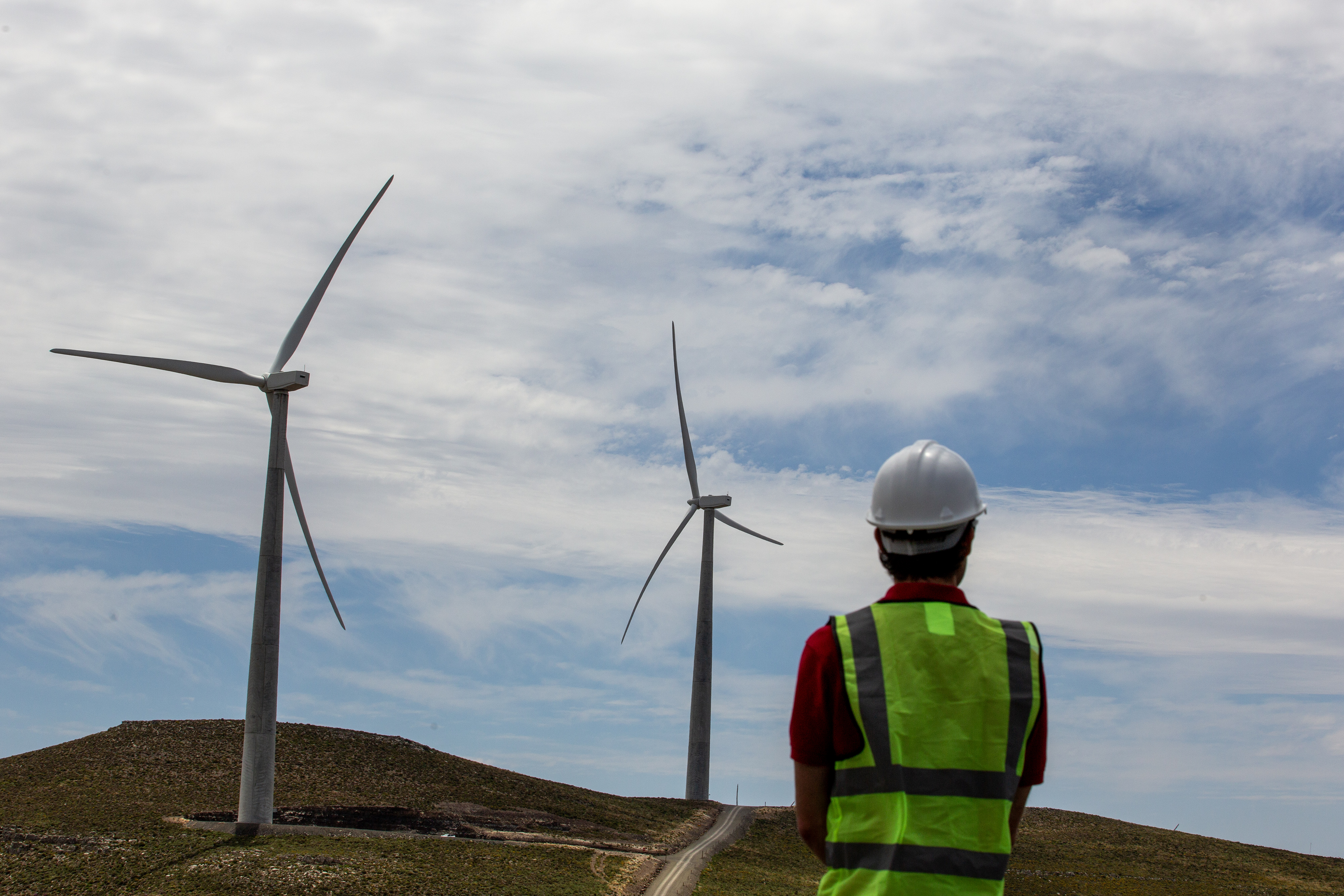
A Roggeveld Wind Farm employee inspects wind turbines during a site visit. (Photo: Shelley Christians)
During the worst period of load shedding, in December 2022, Eskom said that on average, wind generation contributed 1,768MW — with a minimum of 757MW to a maximum of 2,570MW — during evening peak times, equivalent to one to two stages of load shedding.
For the past 12 months, from 1 November 2022 to 31 October 2023, Eskom has purchased 11.24 terawatt hours from private wind energy generators under the REIPPP. This, combined with Eskom’s Sere wind farm, contributed 5.54% to the total system supply.
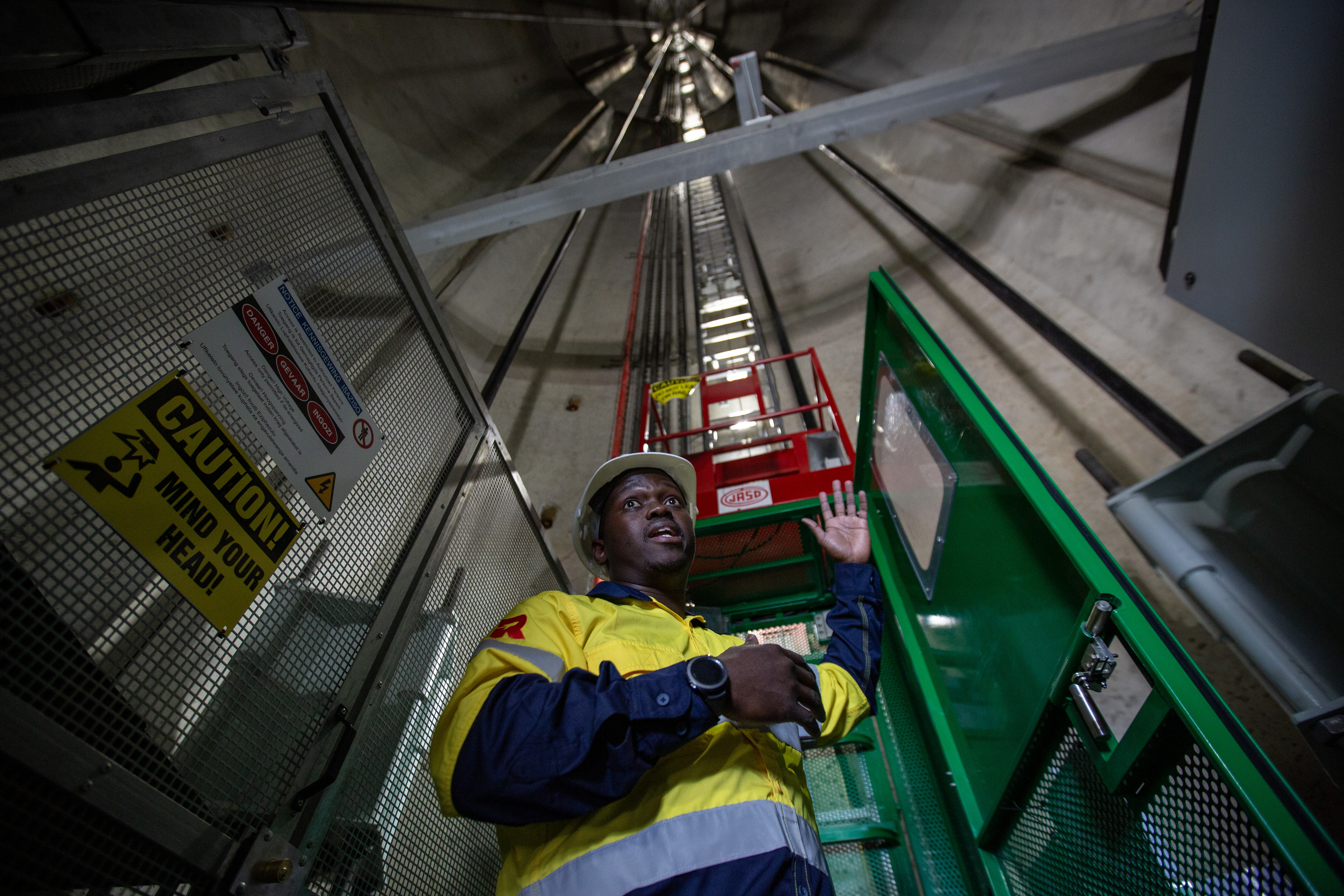
Facility manager Nhlakanipho Kunene shows visitors the lift inside the tower that engineers use to reach the wind turbine. (Photo: Shelley Christians)
Eskom said it was important to note that wind generation in South Africa has definite seasonal characteristics because most of the wind farms were in the Western and Eastern Cape coastal regions. During the summer months, high wind electricity generation aligns with the evening peak period and drops during the low-demand period in the middle of the night.
During the winter months, wind electricity generation is driven by cold fronts. The strong wind ahead of the cold front drives up wind electricity generation but the low-pressure trough behind the cold front drops the electricity generation significantly.
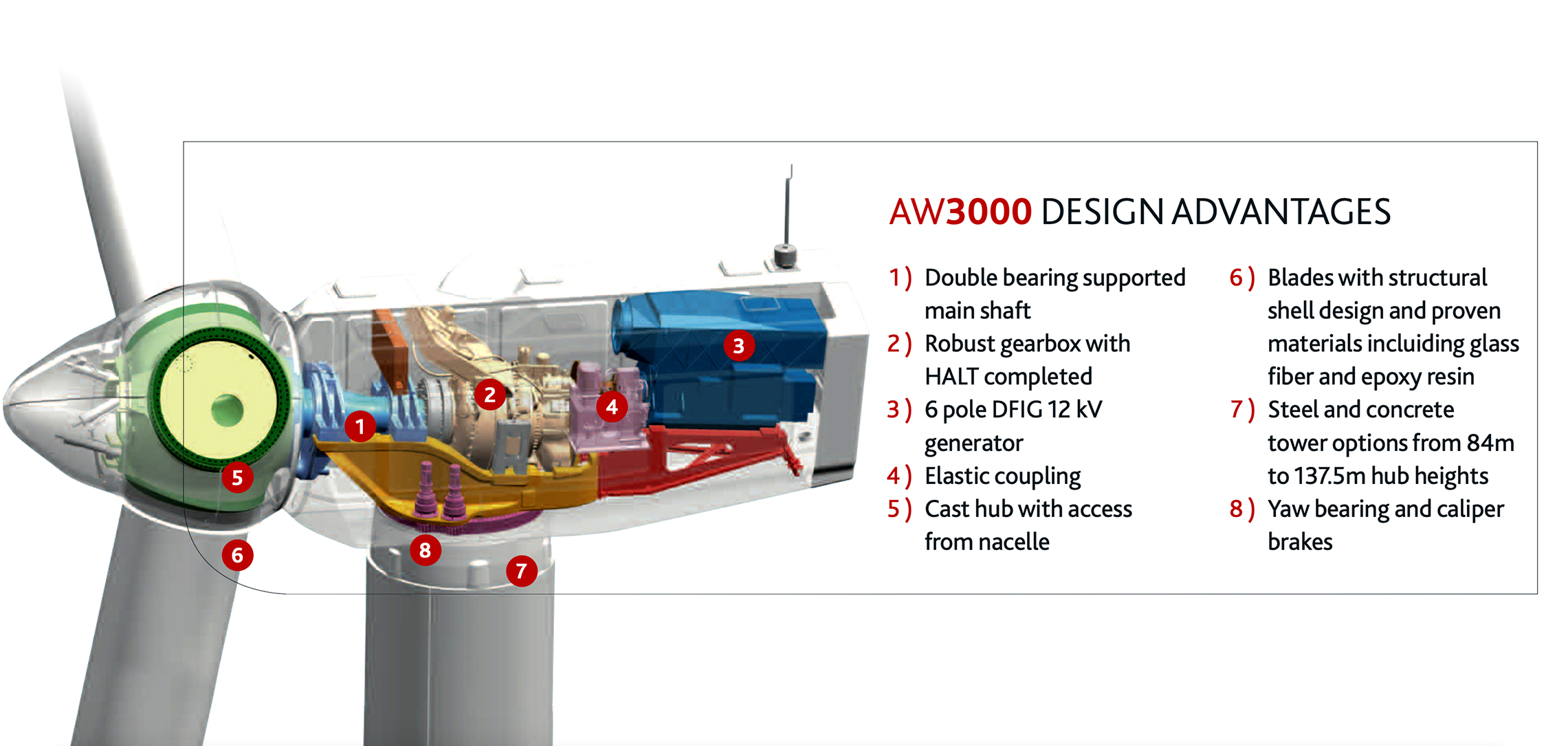
Roggeveld wind farm uses Acciona Windpower’s AW3000 blade technology for its turbines. (Image: ACCIONA Windpower)
“It is not uncommon to have a change in wind generation of 2,500MW as a cold front passes the wind farms in the Cape. Unfortunately, the drop in wind generation often coincides with cold weather reaching the densely populated Gauteng province, which drives up demand for electricity,” the power utility said.
Sharief Harris, the head of development at Red Rocket, said: “Megawatt by megawatt these [wind farm] projects help the country in transitioning from its reliance on coal to renewable energy generation facilities.”
How is wind energy created and connected to the grid?
Inside one of the 100-metre high turbines, Roggeveld’s Facility Manager Nhlakanipho Kunene explained “the wind turbine has autonomous operation capabilities, it monitors the amount wind availability and faces its direction, in its resting position, the blades pitch to 90˚to always cuts the wind. When wind is available, the blades pitches to 0 ̊ to catch the wind as kinetic energy and it starts turning – this movement of the rotor is translated into electrical energy through a multistage gearbox with its high-speed shaft connected to a high voltage generator. This is a snapshot of what it’s like inside the nacelle as an example, specialised training is needed to be able to go up tower and access the nacelle.”
At the base of the turbine, also called the ground station, is a high voltage transformer, a power converter, electrical elevator, and switchgear, as well as the power control section that drive the operation of the wind turbine by collecting and analysing data from all sensors of the wind turbine wired to it (this is the starting point for Technicians when visiting the wind turbine).
The transformer we saw, transforms high voltage from the generator or grid to low voltage for the power converter and other controls and lighting. The switchgear connects each wind turbine to a collector switchgear that connects to the substation.
Wiring runs from the top in the nacelle to the ground station. In this section is the converter module which interacts with the generator, working to synchronize the electrical energy from the generator to the grid.
There are three monitoring centres involved with technical services & maintenance management, central monitoring operations (energy production and grid compliance) and contractual performance & reporting, and we can detect changes in the wind turbine statuses and substations in a matter of milliseconds.
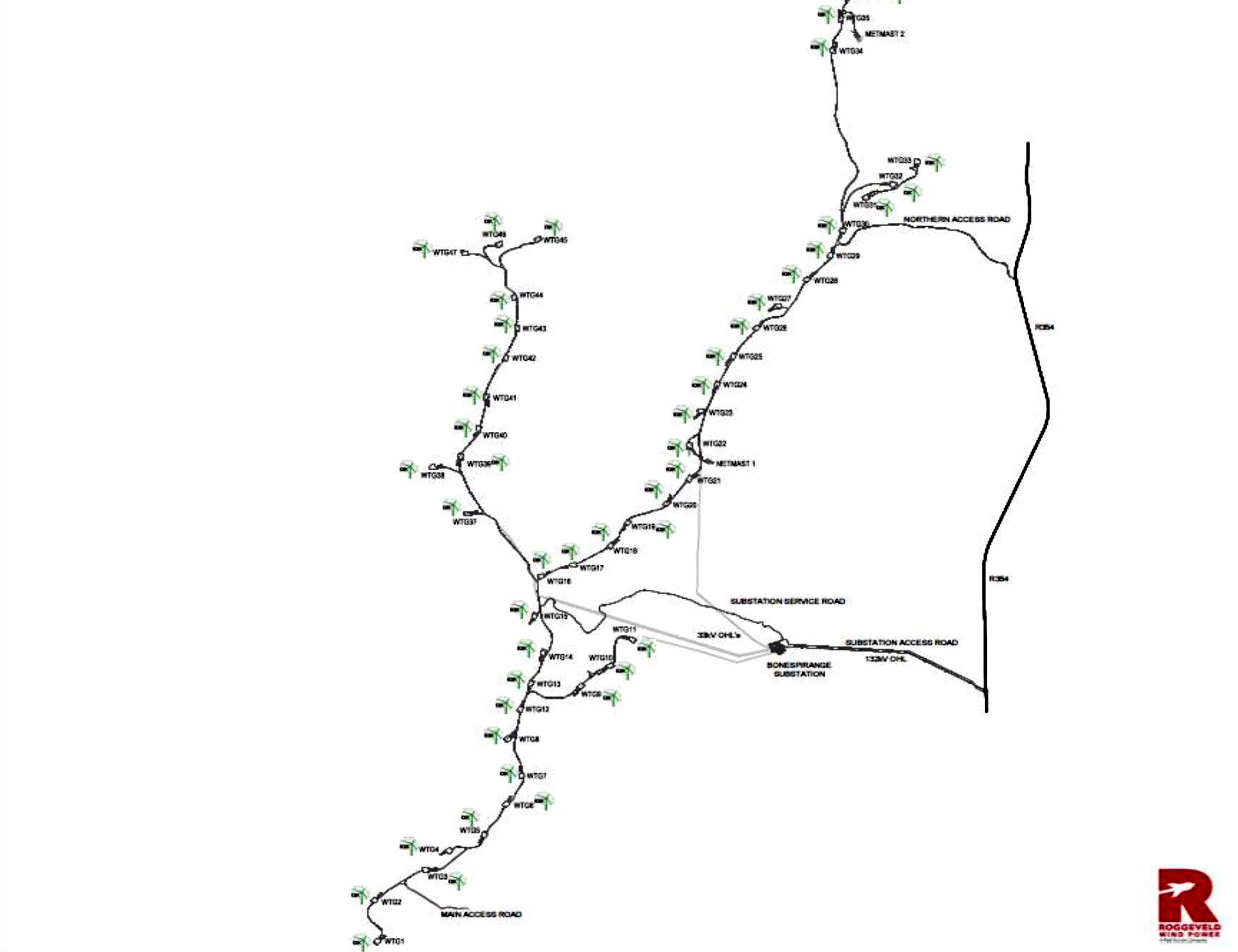
A plan depicting where each of the 47 wind turbines are located on the Roggeveld Wind Farm. (Image: Red Rocket)
Kunene said, “When I say its operation is fully automatic, it waits for the wind and detects the consistency of the wind and then it starts operating. If it encounters a fault, it diagnosis itself first and then pauses for the fault to be resolved and if the fault is within its recovery capabilities, faults are categorised whether it they can be managed, by the turbine itself, or remotely by operators or by our technical experts or if a local intervention is needed a technician will to drive to the turbine to resolve the fault.”
Environmental programme to mitigate wildlife loss
There is a bird monitoring and mitigation project at Roggeveld.
Maggie Logan, the head of sustainable investments at Red Rocket, said four to six environmental and renewable energy professionals are stationed at Roggeveld every day.
“The team remains on site for six to eight hours a day and monitors most intensively during the most crucial flying times of the Verreaux’s eagles [that live near the wind farm]. These times vary with seasonality and the birds’ actual flight patterns. When the team spots the bird or birds at a certain distance, they call the control room to shut down the impacted turbine or turbines.
“A shutdown takes approximately 30 seconds to one minute and the turbine will remain nonoperational until such time that the bird moves away to a safe distance. Once the bird has moved away, the turbine is then switched back on and this takes around the same time as a shutdown,” Logan said.
Read more in Daily Maverick: Energy sector explores strategies to limit bird and bat fatalities at wind farms
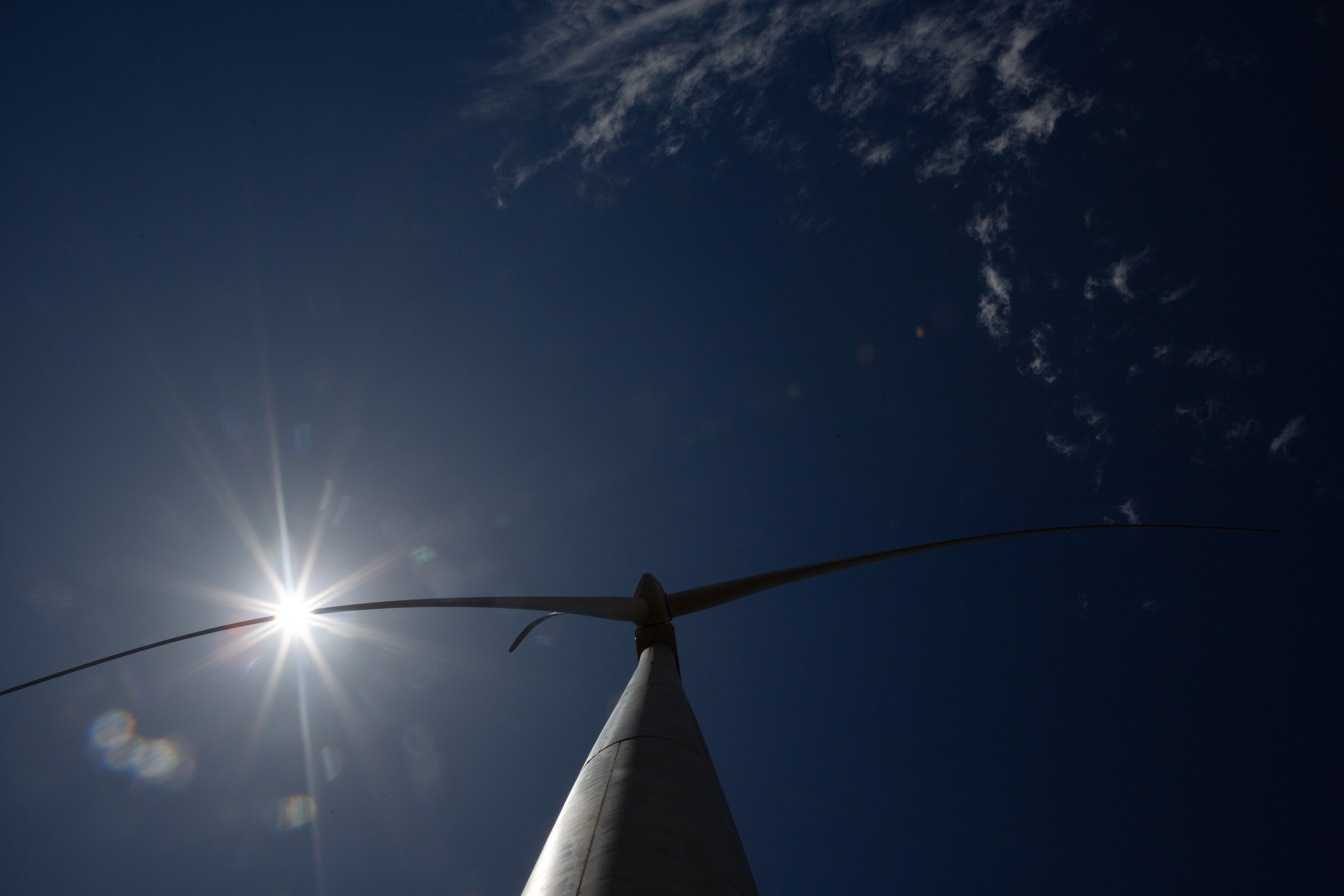
The rotor diameter of a wind turbine is 125m, the length of a soccer field. (Photo: Shelley Christians)
Ennio di Palma, the head of operations and maintenance at Red Rocket, elaborated on some of the challenges the wind farm faced.
“During construction, Roggeveld was impacted by Covid-19, and of course the adaptation of the new Covid policies and regulations. The terrain was also significantly challenging in relation to the delivery and installation of the wind turbine components, logistical challenges experienced with regard to spare parts and components, etc.
“The remoteness of the project was also a challenge, as it was not easily accessible. Extreme weather conditions are naturally present in the area, and as a result … the area can be prone to extreme weather conditions such as high wind speeds, floods and extreme temperatures. It is also one of the coldest areas in South Africa.
“While high winds are a good resource for a wind farm, these conditions pose challenges to some specialised maintenance operations,” Di Palma said.
Red Rocket has four operational assets — solar PV, onshore wind and small hydro — with a total (contracted) capacity of 227MW of renewable energy projects operating in Africa.
The company has another 1,150.5MW (contracted capacity) that is expected to become operational over the next few years, 440MW of which have been won under the REIPPPP. In total, Red Rocket has won 1,023MW (contracted capacity) under the REIPPPP, of which 219MW are currently operating, 364MW are under construction and 440MW are heading to financial close. DM

















And what about the waste from this? The blades that have to be replaced every 5 years cannot be recycled, they are composite material.
You don’t seem to have a day job…and why should they be recycled? You think everything in a coal-fired plant can be?
Hahaha – riiiight so you prefer landfill sites with thousands and thousands of used blades. Do you know how big those things are? Do you know the blades have to be changed every 5 years?
No matter how much wind energy is generated there will always be a need for backups during lulls. Do you want rolling blackouts forever? Go nuclear.
The ONLY viable cheap and clean energy source available at the moment, until something cleaner and cheaper comes along Nuclear is indeed the way to go
Let’s nuke the budget. Have you even done the financial calcs to say it is viable and cheap? Ask EDF or those paying for Hinckley in the UK about being on time and on budget.
I’ve sone quite a bit of research into nuclear power and the developments in micro-reactors. The cost of building the old style reactors was huge but the new more modern options are far cheaper and far more reliable and sustainable
From what I’ve read, the most recent versions are comprised of modules built in factories and assembled on site. While they are not as large generating-wise as traditional atomic power plants they will service a large portion of a city. Plus, many of them could be built simultaneously.
A bit off topic, Merry Christmas to everyone.